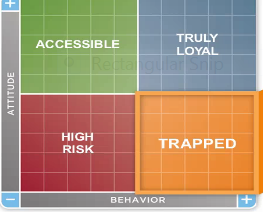My latest article published by CEO Magazine briefly juxtaposes traditional M&A finance with Crowdfunding.
M&A Finance vs Crowdfunding in 2013: What Works for You?
Published May 30 2013 CEO Magazine by Rick Andrade
While global M&A activity declined from over $3 Trillion in 2007 to $1.5 Trillion in 2012, according to Dealogic, it should be no wonder the damage these lingering effects are having on M&A transactions. One industry in particular, Food & Beverage is the tale or two worlds. According to the Food Institute’s annual research on Food M&A, the number of deals in 2012 was 316, down from 386 in 2011. Meanwhile, US corporate balance sheets continue to pile up cash, and Central Banks around the world continue to flood markets with new currency. The US stock market as a result continues higher and higher with the Dow past 15,000, and the S&P past 1600, both all-time highs.
The consequence of all this money flooding in from all corners of the globe is to inflate US stock prices. In fact, public food companies are trading at new record Multiples, now over 12x times earnings for food products, processing , and ingredients, up from 9x only 9 months ago. Note the recent purchase of Heinz by Berkshire Hathaway which paid $27.5 Billion to close the deal, a premium price.
Smaller private companies on the other hand, food or otherwise, are not getting as much love nor the benefits from the truck loads of global money flowing into public market stocks. Rather the multiples for lower middle market private companies are half what these giants are valued at. So why are the big deals getting bigger while small deals still lag? The assumptions I hear from smaller company CEOs is “buyers want perfection.” And any dip in earnings or EBITDA becomes a large discount to value, and hence lower purchase price offers from Strategic Buyers and Private Equity Groups. In other words “Risk Off.”
The same results can be seen in lending to middle market companies. According to the SBA: Office of Advocacy, lending from brick and mortar banks was still trending down in 2012 for loans under $1 million, at the same time interest rates are at rock bottom… hence a gap that needs filling.
Enter the new world of Crowdfunding 2.0 courtesy of the Jobs act signed by President Obama in April 2012. While the SEC is still tinkering with the final rules for just how these online portals called Crowdfunding Platforms will comply with Reg D rules, the road is paved for final release any day now that incoming SEC chief Mary Jo White has the rules on her desk for final approval. As it stands now, however, any company or person can raise money online using a CF platform like Kickstarter as long as the funds are considered a Donation.
For companies that want to borrow money using a CF platform, like SoMoLend the old rules of requiring no more than 35 unaccredited investors is still the golden rule. But that’s about to change. According to the new rules being proposed under the JOBS Act, companies can raise up to $1million each year from any number of unaccredited investors. That’s people who earn less than $200,000 per year. This opens the doors for smaller companies to beat the banks at their own game. In 2012 CF platforms raised over $2.7 Billion according to Crowdsourcing.org. That’s not much in a $200 Trillion global monetary system, or even of the $$55 Billion Angel and VC money invested each year. But, CF is growing at a tremendous rate, and is expected to top $5 Billion in funds raised by the end of 2013.
So fear not ye middle market CEOs, for until local banks can see their way back to the lending table, Crowdfunding is stepping up, ready to help new and established business owners get the funding they need to grow into bigger firms, and one day earn the higher multiples these companies deserve as much as any S&P behemoth. For food companies and everyone else in middle-market- land the time is coming to have our cake and eat it to.
Rick Andrade is a Los Angeles based investment banker focused on helping middle market companies in finance, mergers, and acquisitions. He began his career learning Big Five accounting firm strategy-consulting at Accenture and later at Cap Gemini Ernst & Young. Andrade is a Managing Director at Janas Associates in Pasadena, Ca. and blogs at www.RickAndrade.com
Read: www.RickAndrade.com
Read: http://rickandrade.com/wp-content/uploads/2013/05/Food-Exec-Grp-Ppt-Rick-Andrade-5-7-13.pdf

